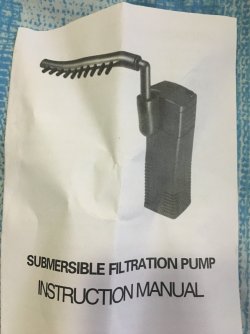Do not add any more fish to the tank until it has cycled in a couple of months time.
If the tank is only a couple of weeks old and didn't have a filter until yesterday, the fish probably died from ammonia poisoning.
Anything that breaks down in water (fish food, fish waste, dead plant, dead fish) produce ammonia. In an established tank with an active biological filter, you get beneficial bacteria that eat the ammonia and convert it into nitrite. You get more bacteria that eat nitrite and convert it into nitrate. You get rid of nitrates by doing regular water changes (about 75% each week). Without an established biological filter, the ammonia levels build up and poison the fish.
It takes about 4-6 weeks for a filter to become established with the good bacteria. Until that happens you should keep the feeding down to a couple of times per week and do a 75% water change and gravel clean the substrate 4-8 hours after feeding. You should also monitor the ammonia and nitrite levels and do a 75% water change any time you have a reading.
Make sure any new water is free of chlorine/ chloramine before it is added tot he tank.
You can buy test kits from the pet shop to test for ammonia, nitrite, nitrate, pH and GH. There are "Master Test Kits" that contain all these tests or you can buy them individually. If money is tight then take a glass of tank water to the local pet shop and ask them to test the water for you. Write the results down in numbers when they do the test.
If you do buy test kits, try to get liquid test kits rather than dry paper strip kits. The liquid ones are slightly more accurate. Check the expiry date on them and don't buy kits that are kept near a heat source or in front of a window.
Keep test kits in a cool dry place away from light to maximise their shelf life.
If you want to help speed up the cycling process you can buy liquid bacterial supplements and add them to the tank. I recommend using a double dose every day for the first week, then add the rest. Try to add it to the aquarium near the filter intake so it gets drawn into the filter where it's needed.
If you post a picture of the filter and the name of it, we can tell you how to maintain the filter.



